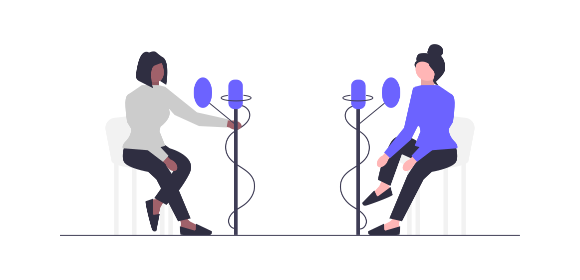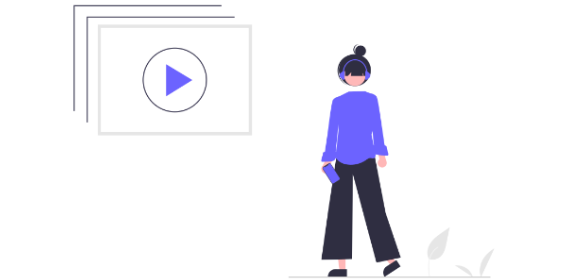How to Transcribe an Interview

How to transcribe an interview - the easy way
Whether you're a journalist chasing quotes, a researcher conducting qualitative interviews, or a student gathering insights for your thesis, transcribing interviews can be time-consuming and frustrating. Manually typing every word can take hours, and it's all too easy to miss something important.
But it doesn't have to be that hard. In this guide, we'll walk you through how to transcribe an interview the quick and easy way.
Jump to:
- What is an interview transcript?
- Why transcribe interviews?
- How to transcribe an interview - the easy way
- How to edit an interview transcript
- Other ways to transcribe an interview
- Who might benefit from an interview transcription?
What is an interview transcript?
An interview transcript is a written version of a recorded conversation that took place during an interview. It captures the dialogue between the interviewer and the interviewee word-for-word, making it easier to review what was said, highlight key quotes, and share the content in different formats.
Whether you're using it for research, reporting, or content creation, a transcript acts as a searchable, skimmable record of your interview - no need to replay the audio every time you want to double-check a detail.
Why transcribe interviews?
Transcribing interviews isn't just about convenience - it can make your work faster, more accurate, and more accessible.
Here's why it's worth doing:
-
Easier to analyze - With a transcript, you can quickly scan for key themes, ideas, and quotes without trudging through hours of audio.
-
Accurate quotes - Journalists and researchers rely on transcripts to ensure that quotes are captured and reported word-for-word.
-
Better accessibility - Adding transcripts or subtitles helps make your content more inclusive for people who are deaf or hard of hearing.
-
Repurposing content - A transcript makes it easier to turn spoken content into articles, reports, blogs, or social posts.
And that's just the start. Discover more of the wide-ranging benefits of interview transcription!
How to transcribe an interview - the easy way
The easiest way to transcribe an interview is by using automatic transcription software like Transcribe. Simply upload your audio or video file, and our AI-powered software will automatically convert your interview into text in minutes.
Here's how to do it from start to finish:
1. Prepare before the interview
The clearer the recording, the easier it will be to transcribe your interview, so here are some things to consider before you get started with the interview:
-
Choose a quiet location to reduce background noise
-
Use a headset or external mic for clearer sound than your laptop's built-in microphone
-
Ask speakers to take turns and avoid interrupting each other
-
Speak clearly and at a steady pace to help the software pick up every word
Get more tips on how to interview someone for an article.
2. Upload your interview recording
Once your interview is finished, simply upload your audio or video file to the Transcribe app or online editor. We support a wide range of formats, including mp3, m4a, wav, mp4, mov, and more - and you can import files directly from cloud platforms like Google Drive and Dropbox. You can also integrate with Zoom for quick and easy transcriptions of Zoom interviews.
Prefer to record and transcribe in one step? With Transcribe, you can record and transcribe your interview in real time - right in your browser or in the app. Find out more about real-time transcription.
3. Transcribe the interview recording automatically
After uploading, Transcribe will convert your recording into a text transcript in just a few minutes, complete with speaker separation and timestamps to make it easier to navigate the recording.
4. Label speakers
Transcribe will automatically break up the transcript based on who's speaking. You can click on each speaker's name to edit or rename them - your changes will apply across the entire transcript.
5. Review and edit the transcript
While Transcribe's AI is highly accurate, it's always a good idea to proofread the transcript and make minor edits for clarity. You can do this directly in the browser or in the Transcribe app, or you can export your transcript in a range of formats - including TXT, DOCX, PDF, and SRT for subtitles.
Let's take a look at the editing process in more detail.
How to edit an interview transcript
Depending on how you plan to use the interview, you might want a word-for-word record or a cleaner, more readable version of the interview transcript. Here's how to decide what level of editing you need - and how to do it fast.
Full verbatim
Full verbatim transcripts capture every single sound, including false starts, repetitions, 'ums' and 'ahs', and interruptions. It's useful for legal transcripts or linguistic analysis, but it can be hard to read and it often isn't necessary.
Clean verbatim (AKA intelligent verbatim)
This is the most common type, especially for journalism, research, and professional use. It involves removing filler words and minor stumbles to make the transcript easier to read, while keeping the meaning intact.
Summary or detailed notes
If you don't need quite as much detail from your transcript, then detailed notes or a transcript summary may be better instead. Detailed notes go a step further than verbatim and remove any off-topic conversation, while a summary includes simply the main points from the interview. Both versions are faster to produce and easier to scan - especially for internal reviews or content repurposing.
Top tip: If you're sharing the transcript, consider including a short summary at the beginning of a verbatim transcript to give readers context.
Check out our detailed guide on how to edit a transcript for more tips and best practices.
Other ways to transcribe an interview
Using transcription software like Transcribe is the fastest and easiest option - but it's not the only one. Depending on your budget, time, and preferences, here are the other main ways to turn your interview into text:
Type it out manually
Manually transcribing the interview yourself is the cheapest option - but also the most time-consuming. A one-hour interview recording can take four hours or more to transcribe - even for professional transcribers! You'll also need to constantly pause, rewind, and jump between your audio player and word processor, which can be frustrating.
Hire a professional transcriber
You can pay a freelancer or agency to transcribe the interview for you. This usually results in highly accurate transcripts, however, these services can be expensive and turnaround times can be several days - or even longer.
Why software wins
Automatic transcription tools like Transcribe strike the best balance between speed, cost, and accuracy - especially with ongoing developments in AI. You get a full transcript in minutes, can easily make edits, and only pay a very tiny fraction of what human services cost.
Example of an interview transcript
So now you know the different options available to you, and what the process of transcribing an interview looks like, let's take a look at an example of an interview transcript.
Who might benefit from an interview transcription?
Anyone who works with spoken content can save time, stay organized, and create more accessible materials by transcribing interviews. Here are just a few examples:
-
Students - Working on a dissertation or research project? Transcripts make it easy to review interviews, pull out quotes, and analyze patterns.
-
Researchers - For qualitative studies, transcripts help you code data, identify recurring themes, and ensure your analysis is grounded in what was actually said.
-
Journalists - Transcriptions make it quick to scan for quotes, fact-check statements, and write stories faster. If your interview is filmed, the transcript can also double as a subtitle file.
-
Podcasters - Publishing a transcript alongside your podcast improves SEO, helps more people discover your content, and ensures accessibility for audience members who are deaf or hard-of-hearing.
-
Businesses - Whether it's stakeholder interviews, user research, or team conversations, transcripts make it easy to create summaries, track decisions, and repurpose content for reports or marketing.
Ready to transcribe an interview?
Whether you're conducting interviews for research, storytelling, or strategy, having a clear transcript can save you hours and make your work more impactful. And with AI-powered tools like Transcribe, converting an interview to text is faster and more affordable than ever.
Ready to turn your next interview into a transcript that you can search, edit, and share? Download the Transcribe app or launch the online editor to get started.

How to Transcribe Audio to Text
Wondering how to convert audio into text? From doing it yourself to using the Transcribe app, learn how to transcribe audio with our helpful guide.